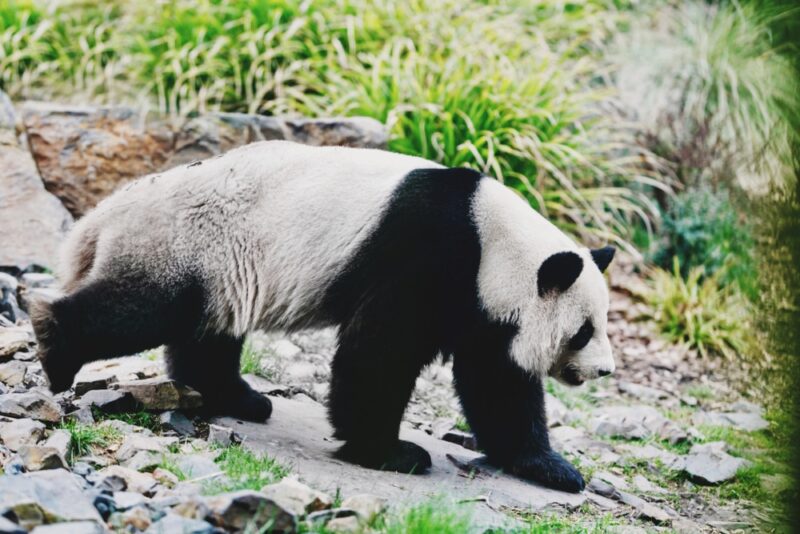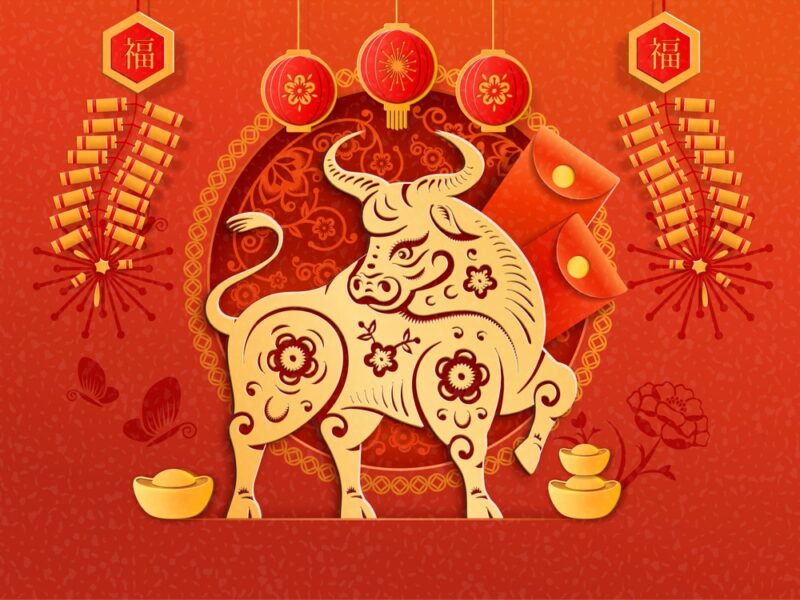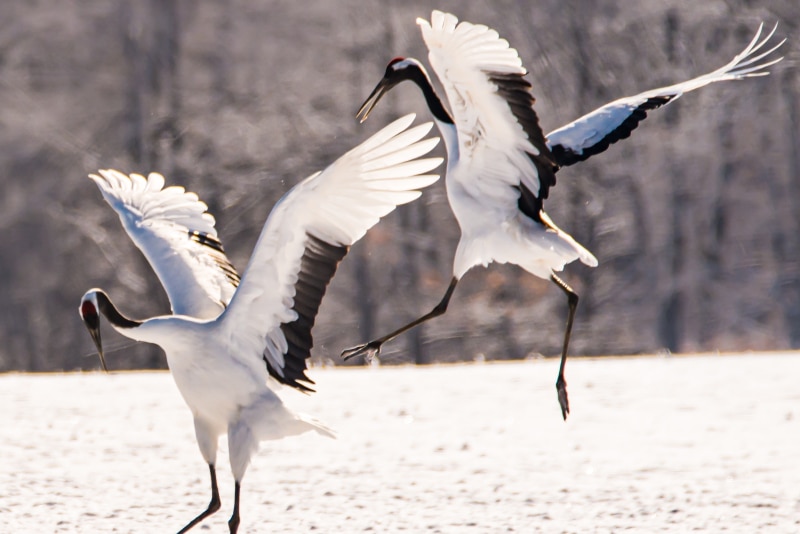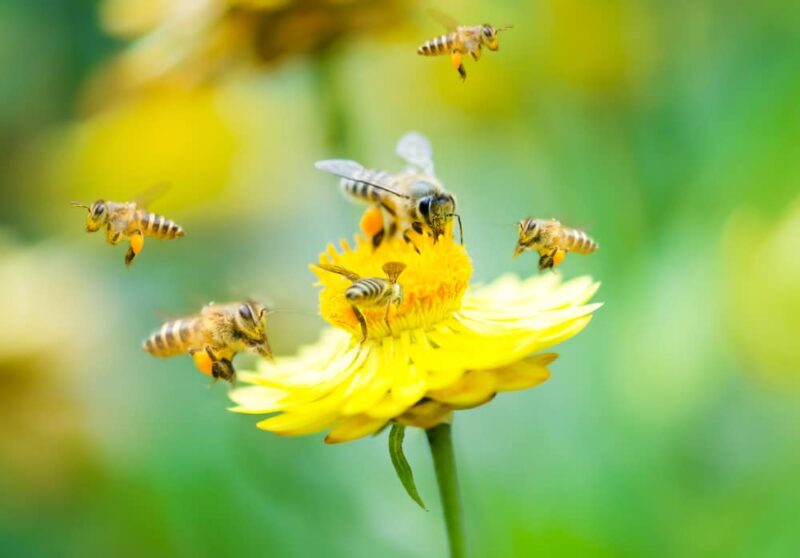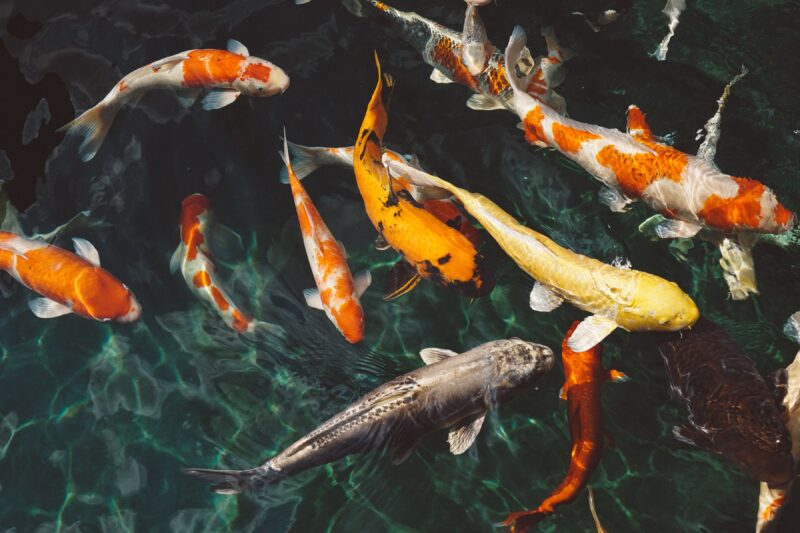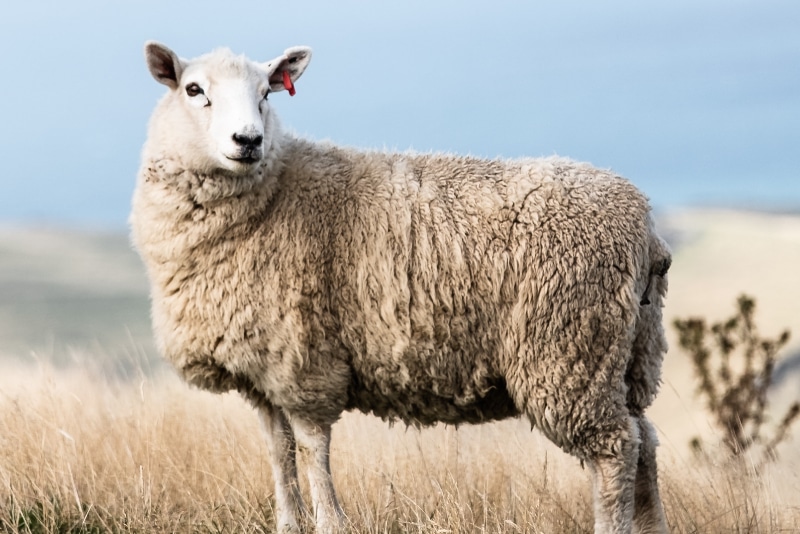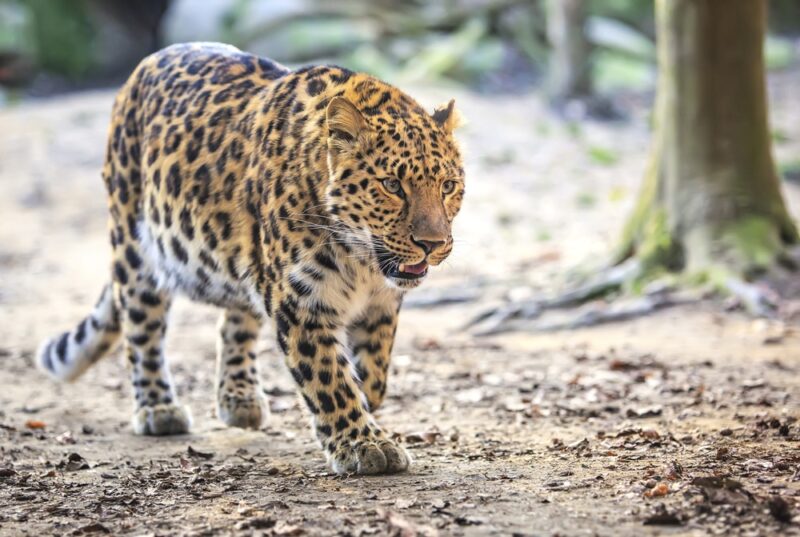Contents
- Animals in Chinese: Audio Guide
- Native Animals of China
- 大熊猫 (dà xióng māo) — Giant Panda
- 亚洲象 (yà zhōu xiàng) — Asian Elephant
- 雪豹 (xuě bào) — Snow Leopard
- 藏猕猴 (zàng mí hóu) — Tibetan Macaque
- 东北虎 (dōng běi hǔ) — Siberian Tiger
- 长臂猿 (cháng bì yuán) — Gibbon
- 小熊猫 (xiǎo xióng māo) — Red Panda
- 亚洲黑熊 (yà zhōu hēi xióng) — Asian Black Bear
- 大虎头蜂 (dà hǔ tóu fēng) — Giant Hornet
- 藏羚 (zàng líng) — Tibetan Antelope
- The Zodiac Animals in Chinese
- Feng Shui Animals in Chinese
- 鲤鱼 (lǐ yú) — Carp
- 麒麟 (qí lín) — Chi Lin, Dragon Horse or Chinese Unicorn
- 鹤 (hè) — Crane
- 龙龟 (lóng guī) — Dragon Turtle
- 象 (xiàng) — Elephant
- 狮 (shī) — Imperial Guardian Lions or Fu/Foo Dogs
- 凤凰 (fèng huáng) — Chinese Phoenix or Firebird
- 金鱼 (jīn yú) — Goldfish
- 蟾蜍 (chán chú) — Three-legged Money Frog
- 龟 (guī) — Turtle
- 鸳鸯 (yuān yāng) — Mandarin Ducks
- Beautiful Birds in Chinese
- Interesting Insects in Chinese
- Ocean Animals in Chinese
- Farm Animals in Chinese
- Animals from the Savanna in Chinese
- Other Significant Animals in Chinese
- Why You Should Study Animals in Chinese
- And One More Thing...
77 Animals in Chinese and Their Cultural Significance (Audio Included)

If you’re learning Mandarin Chinese, at some point you’ll probably want to be able to talk about animals ( 动物 — dòng wù). Animals figure prominently in Chinese cultural stories and everyday idioms.
Not to mention, China is home to thousands of species of wildlife including elephants, tigers and pandas. Today, I’ll teach you the Mandarin words for 77 animals (both real and mythical), with notes on their cultural significance.
Download: This blog post is available as a convenient and portable PDF that you can take anywhere. Click here to get a copy. (Download)
Animals in Chinese: Audio Guide
| Chinese | Pinyin | English |
|---|---|---|
| 大熊猫 | dà xióng māo | Giant Panda |
| 亚洲象 | yà zhōu xiàng | Asian Elephant |
| 雪豹 | xuě bào | Snow Leopard |
| 藏猕猴 | zàng mí hóu | Tibetan Macaque |
| 东北虎 | dōng běi hǔ | Siberian Tiger |
| 长臂猿 | cháng bì yuán | Gibbon |
| 小熊猫 | xiǎo xióng māo | Red Panda |
| 亚洲黑熊 | yà zhōu hēi xióng | Asian Black Bear |
| 大虎头蜂 | dà hǔ tóu fēng | Giant Hornet |
| 藏羚 | zàng líng | Tibetan Antelope |
| 鼠 | shǔ | Rat |
| 牛 | niú | Ox |
| 虎 | hǔ | Tiger |
| 兔 | tù | Rabbit |
| 龙 | lóng | Dragon |
| 蛇 | shé | Snake |
| 马 | mǎ | Horse |
| 羊 | yáng | Ram |
| 猴 | hóu | Monkey |
| 鸡 | jī | Rooster |
| 狗 | gǒu | Dog |
| 猪 | zhū | Pig |
| 鲤鱼 | lǐ yú | Carp |
| 麒麟 | qí lín | Chi Lin, Dragon Horse or Chinese Unicorn |
| 鹤 | hè | Crane |
| 龙龟 | lóng guī | Dragon Turtle |
| 象 | xiàng | Elephant |
| 狮 | shī | Imperial Guardian Lions or Fu/Foo Dogs |
| 凤凰 | fèng huáng | Chinese Phoenix or Firebird |
| 金鱼 | jīn yú | Goldfish |
| 蟾蜍 | chán chú | Three-legged Money Frog |
| 龟 | guī | Turtle |
| 鸳鸯 | yuān yāng | Mandarin Ducks |
| 鸽 | gē | Dove |
| 鹰 | yīng | Eagle |
| 鹅 | é | Goose |
| 翠鸟 | cuì niǎo | Kingfisher |
| 鹊 | què | Magpie |
| 孔雀 | kǒng què | Peacock |
| 雉 | zhì | Pheasant |
| 鹑 | chún | Quail |
| 蜜蜂 | mì fēng | Bee |
| 蝴蝶 | hú dié | Butterfly |
| 蝉 | chán | Cicada |
| 蟋蟀 | xī shuài | Cricket |
| 蚱蜢 | zhà měng | Grasshopper |
| 螳螂 | táng láng | Praying Mantis |
| 蚂蚁 | mǎ yǐ | Ant |
| 蜘蛛 | zhī zhū | Spider |
| 鱼 | yú | Fish |
| 螃蟹 | páng xiè | Crab |
| 鳗鱼 | mán yú | Eel |
| 锦鲤 | jǐn lǐ | Koi Fish |
| 龙虾 | lóng xiā | Lobster |
| 虾 | xiā | Shrimp |
| 鲨鱼 | shā yú | Shark |
| 鲸鱼 | jīng yú | Whale |
| 海豚 | hǎi tún | Dolphin |
| 鸡 | jī | Chicken |
| 驴 | lǘ | Donkey |
| 牛 | niú | Cow |
| 羊 | yáng | Sheep |
| 山羊 | shān yáng | Goat |
| 狮子 | shī zi | Lion |
| 犀牛 | xī niú | Rhinoceros |
| 长颈鹿 | cháng jǐng lù | Giraffe |
| 猎豹 | liè bào | Cheetah |
| 河马 | hé mǎ | Hippopotamus |
| 獾 | huān | Badger |
| 蝙蝠 | biān fú | Bat |
| 熊 | xióng | Bear |
| 猫 | māo | Cat |
| 鹿 | lù | Deer |
| 豹 | bào | Leopard |
| 招财猫 | zhāo cái māo | Maneki-neko or Lucky Cat |
| 水牛 | shuǐ niú | Water Buffalo |
Native Animals of China
If you’re learning Mandarin to talk with native speakers, especially if you’re looking to travel to China, then you might want some vocabulary to talk about the native Chinese wildlife.
Here are some of the more well-known creatures that inhabit China’s wilderness.
大熊猫 (dà xióng māo) — Giant Panda
Literally translated as “big bear cat,” the Giant Panda lives in the mountains of Central China and is considered their national symbol. This bear was once considered highly endangered, but after a decades-long conservation effort has been reclassified as “vulnerable.”
亚洲象 (yà zhōu xiàng) — Asian Elephant
The Asian Elephant is the largest living land animal in Asia, found not only in China but throughout Southeast Asia and India. The elephant has been significant to the cultures of those areas for millennia and has been depicted in art dating back to the area’s earliest civilizations.
雪豹 (xuě bào) — Snow Leopard
China has the largest number of snow leopards in the world and it is the most common big cat in the country. They’re stocky and small compared to other big cats and live in high-elevation areas all across Asia.
藏猕猴 (zàng mí hóu) — Tibetan Macaque
Making its home in subtropical forests, the Tibetan Macaque is one of the largest monkeys in Asia. They live in hierarchical groups of up to 40-50 monkeys and adhere to a complex social system.
东北虎 (dōng běi hǔ) — Siberian Tiger
Also known as the Amur Tiger, this is one of the most endangered big cats in the world. In recent years, China has amped up efforts to protect its habitat, including partnering with Russia to create a cross-border wildlife preserve.
长臂猿 (cháng bì yuán) — Gibbon
Gibbons are several species of small apes from Southeast Asia. Gibbons live in trees and have no tails, and they’re thought to be an evolutionary bridge between monkeys and great apes.
小熊猫 (xiǎo xióng māo) — Red Panda
Despite being literally referred to as “small bear cats,” red pandas aren’t related to giant pandas (they’re not even bears!). These small red-colored mammals have pointy muzzles, white-colored faces and bushy striped tails. It’s thought that their closest relatives are skunks, raccoons and weasels.
亚洲黑熊 (yà zhōu hēi xióng) — Asian Black Bear
These bears live throughout the forests of Southern Asia, found as far west as the mountains of Afghanistan and as far east as northeastern China, even on a couple of islands in Japan. They’re omnivorous, eating a wide range of foods including insects, fruit and small animals.
大虎头蜂 (dà hǔ tóu fēng) — Giant Hornet
The Asian giant hornet is found in East Asia and parts of Russia. With a body length of 1.75 inches and a wingspan of about 3 inches, they’re the largest hornets in the world. They’re known for their painful and, in some cases, potentially dangerous sting.
藏羚 (zàng líng) — Tibetan Antelope
This is a medium-sized antelope native to the Tibetan plateau, known for very long, curved horns on the males. They inhabit cold high-elevation environments primarily in China, where they live in large herds and are preyed upon by snow leopards, wolves and lynxes.
The Zodiac Animals in Chinese
You might know all 12 animals in the Chinese zodiac, but do you know what each of them represents? To understand a little more about Chinese New Year’s customs, here are all the Chinese zodiac animals in their correct order, accompanied by brief explanations of their characteristics and symbolism.
鼠 (shǔ) — Rat
According to legend, the rat was the first to cross the finish line of a race organized by the Jade Emperor, or 玉皇 (yù huáng).
Before the finish line, there was a huge river, which the rat cunningly crossed by convincing the ox to let it sit on its head. Instead of expressing any gratitude for the ox’s generosity, the rat dashed to the finish line.
Evidently, the rat can be cruel, manipulative, selfish and scheming. But it also has good characteristics such as charisma, discipline, forthrightness and sociability.
牛 (niú) — Ox
The ox came in second in the race, shortly after the rat. Its dependability and calm nature can be considered both strengths and weaknesses.
The positive traits of the ox are modesty, logicalness and tenacity, while its negative traits include being materialistic, narrow-minded and stubborn.
虎 (hǔ) — Tiger
The tiger kept a good pace throughout the race but was thrown off by the river. Coming in third, the tiger can be reckless, quick-tempered, impatient and fearful, as well as affectionate, sincere, humanitarian and powerful.
兔 (tù) — Rabbit
Also thrown off-course was the rabbit, but a floating log helped it cross the finish line after the tiger. The rabbit is known to be artistic, cautious, compassionate and self-assured. But it also can be detached, superficial, moody and lazy.
龙 (lóng) — Dragon
Unbeknownst to the rabbit, the dragon came to its aid by blowing the rabbit across the river as it was struggling. Prior to that, the dragon also extinguished a fire to save a nearby village.
The Chinese consider themselves to be descendants of dragons. This fire-breathing creature is also a national emblem that has inspired many idioms.
The dragon is thought to be generous, loyal, magnanimous and zealous. It’s also arrogant, brash, demanding and impetuous.
蛇 (shé) — Snake
To conserve energy, the snake wrapped itself around the leg of the horse before crossing the river to steal sixth place.
The snake is thought to be wise, sensual, enigmatic and deep thinking. It can also be possessive, distrustful and hedonistic.
马 (mǎ) — Horse
Frightened by the snake attached to its leg, the horse fell back into seventh place.
The horse is popular, perceptive, intelligent and open-minded. Negative traits include being gullible, anxious and lacking perseverance and stability.
羊 (yáng) — Ram
Working together with the monkey and the rooster, these three traveled across the river on a raft. Once they reached the other side, it was everyone for themselves.
The ram is sympathetic, peaceful, gentle and determined. It can also be indecisive, overly passive, sensitive and pessimistic.
猴 (hóu) — Monkey
The ram was followed by the monkey. It’s known to be quick-witted, innovative, inquisitive and capable of solving problems. Its weaknesses include being egotistical, vain, jealous and suspicious.
鸡 (jī) — Rooster
The rooster came in 10th place. Its positive traits include being organized, practical and alert. The rooster is also a perfectionist. Alternatively, the rooster can be overly critical, zealous, opinionated and abrasive.
狗 (gǒu) — Dog
Unsurprisingly, the dog was distracted by the river and just splashed about as the other 10 animals passed it. The dog is honest, obedient, idealistic and loyal, which makes it an ideal companion for humans, but it also can be stubborn, lazy, cold and worrisome.
猪 (zhū) — Pig
The pig did as pigs do—it stopped to eat in the middle of the race and then fell asleep. It eventually finished the race right before the Emperor was about to give up on him.
The pig is a sociable, peace-loving creature that’s patient and thoughtful. But it can also be naïve, gullible, materialist and over-reliant.
Feng Shui Animals in Chinese
Feng shui is a huge part of Chinese culture. Feng shui involves energy flow and provides guidance on how we can live in harmony with our human-made environments.
Here are some noteworthy feng shui animals.
鲤鱼 (lǐ yú) — Carp
Because 鲤 (lǐ) sounds a lot like 利 (lì) meaning “favorable” and 力 (lì) meaning “strength” and “power,” the carp can symbolize a favorable advantage. This advantage can be in terms of fertility or the successful completion of an exam.
麒麟 (qí lín) — Chi Lin, Dragon Horse or Chinese Unicorn
With the head of a dragon, the body of a horse and the scales of a carp, the chimerical creature Chi Lin is the guardian of the home and a protector from evil spirits. It also represents goodwill and wisdom.
鹤 (hè) — Crane
Known for their long lifespans, cranes are bringers of longevity and peace. According to some ancient legends, cranes carry the spirits of the departed to the heavens.
龙龟 (lóng guī) — Dragon Turtle
The dragon turtle has a dragon head and a turtle’s body, which makes this mystical creature a bringer of luck and courage, in addition to stability and protection in the home.
象 (xiàng) — Elephant
In feng shui, the energies associated with the elephant include good luck, wisdom, protection and fertility. Figurines often have the trunk up to represent the showering of good luck.
狮 (shī) — Imperial Guardian Lions or Fu/Foo Dogs
Often seen outside of temples, palaces, government offices and even homes, the Imperial Guardian Lions are protectors that symbolize strength and bravery. They come in pairs where the male protects the structure and the female protects the interior and the inhabitants.
凤凰 (fèng huáng) — Chinese Phoenix or Firebird
This mythological phoenix is believed to have risen from ashes. It exemplifies power, strength and grace. It’s one of the greatest symbols of good luck in feng shui.
金鱼 (jīn yú) — Goldfish
Usually depicted with a lotus, the goldfish stands for the wish for an abundance of gold or wealth.
蟾蜍 (chán chú) — Three-legged Money Frog
Another mythical creature is the Money Frog, which is meant to protect against misfortune and bring more riches into the home.
龟 (guī) — Turtle
Tied to the ancient energy connected to the wisdom of the earth, turtles are protectors and generators of stability and longevity.
鸳鸯 (yuān yāng) — Mandarin Ducks
Mandarin ducks come in male and female pairs that are popularly used in feng shui as a cure for lack of love. They’re meant to enhance the love and passion between couples and also attract new love for individuals who are single.
Beautiful Birds in Chinese
There are many bird species in China that symbolize love, longevity and grace.
鸽 (gē) — Dove
Doves are known to mate for life and maintain monogamy. They’re associated with fidelity and longevity, especially when seen in pairs.
鹰 (yīng) — Eagle
An eagle symbolizes strength. When depicted on a rock by the sea, it symbolizes a hero.
鹅 (é) — Goose
Much like the mandarin ducks, a pair of geese represent marital fidelity. In ancient tradition, the bride’s family was often gifted a goose.
翠鸟 (cuì niǎo) — Kingfisher
The kingfisher is a symbol of peace and prosperity.
鹊 (què) — Magpie
A symbol for joy, 鹊 is sometimes shown upside down during celebrations and special occasions, much like 福 (fú) which means good fortune. But when it’s the right side up, it means happiness is coming.
孔雀 (kǒng què) — Peacock
A peacock is an emblem of dignity and beauty. It can sometimes represent fame.
雉 (zhì) — Pheasant
Another symbol of beauty and good fortune is the pheasant.
鹑 (chún) — Quail
Quail fighting was once quite popular in China. Because of their fighting spirit, quails signify courage.
Interesting Insects in Chinese
Insects have medicinal and nutritional uses in China but don’t necessarily signify health in art and literature.
蜜蜂 (mì fēng) — Bee
Much like in the West, a bee represents hard work and an industrious spirit. However, when shown with peonies, the image represents a man seeking love.
蝴蝶 (hú dié) — Butterfly
A common subject in Chinese paintings, the butterfly represents beauty, elegance and longevity. A pair of butterflies demonstrates the energy exuded from young love.
蝉 (chán) — Cicada
A cicada is an emblem of eternal youth and happiness, as well as life after death. Its association with immortality is why many keep cicadas as pets.
蟋蟀 (xī shuài) — Cricket
Crickets signify the summer season, as well as a fighting spirit.
蚱蜢 (zhà měng) — Grasshopper
Another popular pet in China is the grasshopper, which is associated with nobility and wisdom.
螳螂 (táng láng) — Praying Mantis
A praying mantis represents mystery.
蚂蚁 (mǎ yǐ) — Ant
Ants are symbols of hard work and diligence, and are known for their ability to work together as a team.
蜘蛛 (zhī zhū) — Spider
Spiders are associated with happiness and good luck. They often appear in Chinese art and literature.
Ocean Animals in Chinese
Many fish and other creatures of the sea have great significance in Chinese culture. Here are some of the ocean animals that you might see appear in literature, art and more.
鱼 (yú) — Fish
Because the word for fish or 鱼 (yú) is a homophone for 余 (yú) which means surplus, fish and underwater creatures generally represent abundance and affluence.
螃蟹 (páng xiè) — Crab
A crab is said to represent an advantage in business, as well as prosperity and social status.
鳗鱼 (mán yú) — Eel
An eel can symbolize either fertility or elusiveness.
锦鲤 (jǐn lǐ) — Koi Fish
Koi are fish that come in many colors and are kept for decorative purposes in outdoor ponds. Koi fish (red or black) signify success and wealth.
龙虾 (lóng xiā) — Lobster
Because lobsters can regenerate claws, legs and antennae, they represent regrowth.
虾 (xiā) — Shrimp
A shrimp is symbolic of a long life.
鲨鱼 (shā yú) — Shark
Sharks can represent good fortune and wealth, and are known to be powerful creatures of the sea.
鲸鱼 (jīng yú) — Whale
Whales are a symbol of strength and power. Throughout history, they were also believed to be guardians of the oceans.
海豚 (hǎi tún) — Dolphin
Dolphins are seen as a symbol of harmony and prosperity and are admired for their playful nature and intelligence.
Farm Animals in Chinese
There are a number of farm animals that represent various different qualities in Chinese culture. Here’s how to say some common farm animals in Chinese, and what they symbolize.
鸡 (jī) — Chicken
Chickens are a common symbol of fertility and prosperity. They are also associated with the Chinese Zodiac sign of the Rooster, which is a symbol of good luck and protection.
驴 (lǘ) — Donkey
Donkeys are often associated with determination, as well as with stubbornness and hard work.
牛 (niú) — Cow
In Chinese culture, the cow has often been used as a symbol of prosperity.
羊 (yáng) — Sheep
Sheep are admired for their gentle nature and often represent harmony and peace.
山羊 (shān yáng) — Goat
Goats are often associated with prosperity and good luck.
Animals from the Savanna in Chinese
Although these animals from the Savanna aren’t native to China, many of them do have significance in ancient and/or modern culture.
狮子 (shī zi) — Lion
In Chinese art and architecture, lions are often depicted as guardians of buildings and temples. They represent strength, power, and good luck.
犀牛 (xī niú) — Rhinoceros
Rhinoceroses are commonly associated with protection and strength. In traditional Chinese medicine, rhinoceros horns are thought to have medicinal properties.
长颈鹿 (cháng jǐng lù) — Giraffe
Giraffes are admired for their graceful appearance and often represent longevity and good fortune.
猎豹 (liè bào) — Cheetah
Cheetahs are often associated with power, and are known for their agility and speed.
河马 (hé mǎ) — Hippopotamus
The hippopotamus can represent courage and determination. The word for hippopotamus in Chinese, 河马 (hé mǎ), means “river horse.”
Other Significant Animals in Chinese
There are also plenty of other animals that you might encounter while experiencing Chinese culture, art, media, and more. Here are some more animals and their meanings.
獾 (huān) — Badger
As a homophone for 欢 (huān) meaning joyous, the presence of a badger is a symbol of great happiness.
蝙蝠 (biān fú) — Bat
Because 蝠 sounds and looks like 福 , a bat represents good luck, longevity and happiness.
Bats found in a pair mean double the good fortune, while five bats represent the Five Blessings (longevity, prosperity, good health, good morality and a natural death).
熊 (xióng) — Bear
A bear symbolizes masculinity, bravery and strength, and is believed to be a good talisman against robbers.
猫 (māo) — Cat
Because of its ability to see in the dark, a cat is said to ward off evil spirits.
鹿 (lù) — Deer
A homophone for 禄 (lù), which means good fortune and official salary, the graceful and beautiful deer is indicative of wealth.
豹 (bào) — Leopard
The leopard is associated with bravery and martial ferocity.
招财猫 (zhāo cái māo) — Maneki-neko or Lucky Cat
Often mistaken as the Chinese Lucky Cat, the figurine with one paw up is actually of Japanese origin but is very popular in Chinese culture. It’s a talisman for good luck.
水牛 (shuǐ niú) — Water Buffalo
A water buffalo signifies that spring is approaching.
Why You Should Study Animals in Chinese
- To expand your animal vocabulary. If you’re reading Chinese texts or watching Chinese animated movies for language practice, you’ll definitely benefit from having a substantial repertoire of animal vocabulary. If you want to experience some Chinese animal vocabulary in context, you could use a video-focused language learning program like FluentU.
FluentU takes authentic videos—like music videos, movie trailers, news and inspiring talks—and turns them into personalized language learning lessons.
You can try FluentU for free for 2 weeks. Check out the website or download the iOS app or Android app.
P.S. Click here to take advantage of our current sale! (Expires at the end of this month.)
- To understand animal symbolism in Chinese art and literature. Knowing the differences between different animals’ symbolic characteristics will help you determine the underlying messages or meanings in Chinese art and literature.
- To understand Chinese idioms that mention animals. Mandarin has its own share of idioms, many of which feature animals. For example, a woman referred to as 虎背熊腰 (hǔ bèi xióng yāo), meaning “with a back like a tiger and a waist like a bear,” is implying that she has an impressively strong and masculine figure.
- To understand their significance in everyday life. Ever wonder why some elderly Chinese people keep cicadas as pets, or why Chinese aunties hang paintings of goldfish in their living rooms? The symbolism behind these animals plays a huge role in many Chinese people’s daily lives. This includes anything from getting the right pet to decorating one’s home and office.
Congratulations! Your Chinese animal vocabulary has just increased 70-fold and your understanding of Chinese culture has now grown too.
And One More Thing...
If you want to continue learning Chinese with interactive and authentic Chinese content, then you'll love FluentU.
FluentU naturally eases you into learning Chinese language. Native Chinese content comes within reach, and you'll learn Chinese as it's spoken in real life.
FluentU has a wide range of contemporary videos—like dramas, TV shows, commercials and music videos.
FluentU brings these native Chinese videos within reach via interactive captions. You can tap on any word to instantly look it up. All words have carefully written definitions and examples that will help you understand how a word is used. Tap to add words you'd like to review to a vocab list.
FluentU's Learn Mode turns every video into a language learning lesson. You can always swipe left or right to see more examples for the word you're learning.
The best part is that FluentU always keeps track of your vocabulary. It customizes quizzes to focus on areas that need attention and reminds you when it’s time to review what you’ve learned. You have a 100% personalized experience.
Start using the FluentU website on your computer or tablet or, better yet, download the FluentU app from the iTunes or Google Play store. Click here to take advantage of our current sale! (Expires at the end of this month.)
